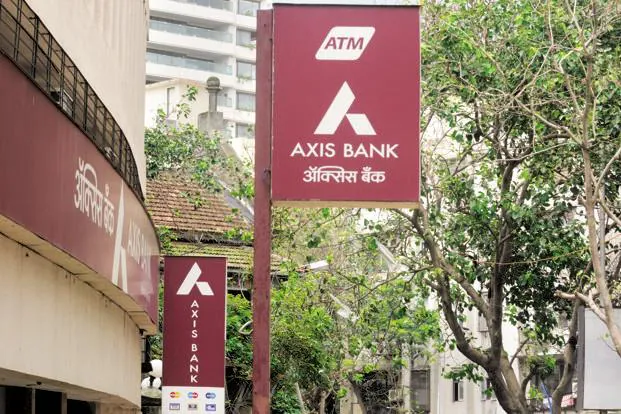Axis Bank History from a fledgling private-sector institution to India’s third-largest private bank is a saga of strategic foresight, technological innovation, and unwavering customer focus. This exhaustive account traces the bank’s journey over three decades, exploring its milestones, leadership transitions, and transformative role in reshaping India’s financial landscape.
Chapter 1: The Birth of UTI Bank (1993–2006)
Origins in Economic Liberalization
In 1991, India’s economic reforms opened the door for private-sector banking. Leveraging this opportunity, Unit Trust of India (UTI), then India’s largest mutual fund, conceptualized a new-age bank. Incorporated in December 1993 as UTI Bank Ltd., it began operations in April 1994 under the leadership of Dr. P. J. Nayak, a visionary economist and former RBI Deputy Governor.
Early Challenges and Growth
- 1994: UTI Bank opened its first branch in Ahmedabad, Gujarat, with a focus on corporate banking.
- 1995: Raised ₹113 crore through an IPO, oversubscribed 13 times.
- 1997: Launched India’s first debit card in partnership with Visa.
- 2000: Expanded to 100 branches, emphasizing tech-driven solutions like online banking.
Foundational Principles : Axis Bank History
UTI Bank differentiated itself through:
- Corporate Governance: Transparent practices and a board comprising industry stalwarts.
- Technology Adoption: Early investments in core banking solutions (CBS) for real-time transactions.
- Customer-Centricity: Introduced “Anywhere Banking,” allowing customers to access accounts across branches.
Chapter 2: Rebranding to Axis Bank (2007–2009)
A New Identity for a New Era
In July 2007, UTI Bank rebranded as Axis Bank to shed its association with the UTI brand (after the 2003 UTI split) and signal its ambition to become a universal bank. The name “Axis” symbolized dynamism, stability, and multidimensional growth.
Leadership Under Shikha Sharma
In 2009, Shikha Sharma, a veteran of ICICI Bank, took over as Managing Director & CEO. Her tenure (2009–2018) marked a golden era:
- Retail Banking Push: Expanded retail loans, credit cards, and wealth management.
- Branch Network: Grew from 700 to 4,000+ branches by 2018.
- Digital Revolution: Launched mobile banking apps and AI-driven tools.
Chapter 3: Expansion and Innovation (2010–2018)
Strategic Acquisitions
- 2010: Acquired Enam Securities for ₹2,067 crore, strengthening its investment banking arm.
- 2013: Purchased HSBC’s Indian credit card portfolio, adding 300,000 customers.
- 2016: Took over Freecharge, a digital payments platform, to boost fintech capabilities.
Digital Transformation
- 2012: Launched Axis Mobile, one of India’s first feature-rich banking apps.
- 2015: Introduced “Axis ASAP”, a mobile-only bank for millennials.
- 2017: Partnered with Amazon Pay and Google Pay for UPI integration.
- 2018: Rolled out “Axis Aha!”, a neo-banking platform for startups.
Awards and Accolades
- Best Bank in India (Business Today, 2016).
- Best Digital Bank (Asiamoney Awards, 2017).
Chapter 4: Navigating Challenges (2018–2022)
Leadership Transition
In 2018, the RBI rejected Shikha Sharma’s fourth term amid concerns over rising NPAs. Amitabh Chaudhry, ex-CEO of HDFC Life, took charge in 2019, steering the bank through turbulent times.
Post-Pandemic Resilience
- Asset Quality: NPAs peaked at 4.5% in 2021 but improved to 2.5% by 2023 through aggressive recovery.
- Digital Surge: UPI transactions grew 300% in 2020–2021.
- Cost Optimization: Closed unprofitable branches and automated back-end processes.
Citibank India Acquisition (2022)
In March 2022, Axis Bank acquired Citibank’s consumer banking business in India for ₹12,325 crore ($1.6 billion), gaining:
- 2.5 million credit card customers.
- 12,000+ employees.
- A robust wealth management portfolio.
Chapter 5: The Modern Era (2023–Present)
Tech-Driven Reinvention
- 2023: Launched “Axis Tap & Pay”, wearable devices for contactless payments.
- 2024: Introduced “Axis Metaverse”, a virtual banking lounge for Gen-Z customers.
- AI & Blockchain: Deployed AI for fraud detection and blockchain for trade finance.
Sustainability Initiatives
- Project Green: Achieved 100% renewable energy for 1,000+ branches.
- ESG Financing: Committed ₹25,000 crore to green projects by 2026.
Global Footprint
- Opened branches in Dubai, Singapore, and London to serve NRIs.
- Partnered with Western Union for cross-border remittances.
Chapter 6: Corporate Social Responsibility (CSR)
Axis Bank’s “Axis Bank Foundation” focuses on:
- Education: Built 500+ digital classrooms in rural schools.
- Healthcare: Funded 200+ mobile clinics serving 5 million patients.
- Livelihoods: Trained 1 million women in vocational skills.
- Disaster Relief: Contributed ₹100 crore during COVID-19 and Kerala floods.
Chapter 7: Awards and Recognition
- Best Bank for SMEs (Financial Express, 2023).
- Most Innovative Bank (The Economic Times, 2024).
- Asia’s Best Employer Brand (Employer Branding Awards, 2023).
Chapter 8: Challenges and Strategic Priorities: Axis Bank History
Ongoing Hurdles
- Regulatory Scrutiny: RBI fines for KYC lapses and IT outages.
- Competition: Pressure from fintechs like Paytm and traditional rivals like HDFC Bank.
- Talent Retention: High attrition in tech and customer service roles.
Vision 2025
- Digital Leadership: Become India’s #1 digital bank with 50 million active app users.
- Financial Inclusion: Cover 100% of India’s districts via BC (Business Correspondent) outlets.
- Global Ambitions: Expand to 15+ countries and capture 10% of NRI banking.Axis Bank digital
Conclusion: Axis Bank History
From its inception as UTI Bank to its current stature as a tech-driven financial giant, Axis Bank History mirrors India’s economic transformation. Its ability to pivot from corporate banking to retail dominance, embrace digital disruption, and prioritize sustainability underscores its adaptive DNA.
As Axis Bank strides into the future, it remains committed to its core values—customer trust, innovation, and inclusive growth. For millions of Indians, the bank is not just a financial institution but a partner in their aspirations, embodying the spirit of a modern, resilient India.
Keywords: Axis Bank history, UTI Bank rebranding, Axis Bank acquisitions, Citibank India acquisition, Axis Bank CSR, Axis Bank digital transformation, Amitabh Chaudhry leadership.


 Watch
Watch
 CASUAL WEAR
CASUAL WEAR
